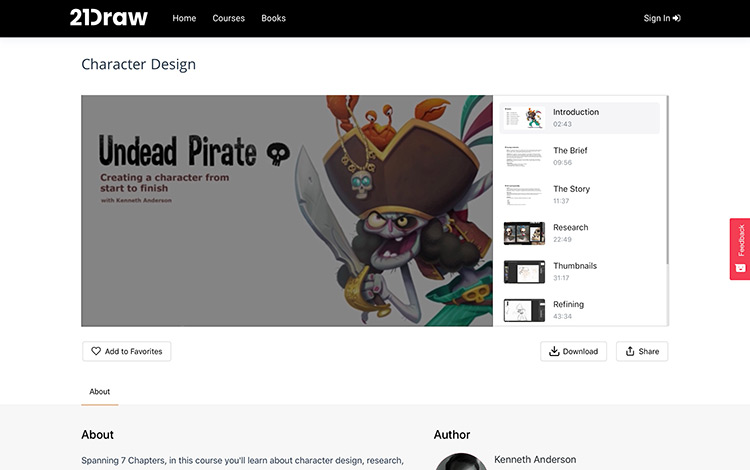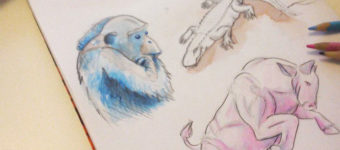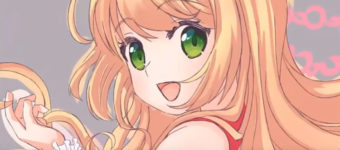
Review: 21-Draw Character Design Course by Kenneth Anderson
Character design is a specialization in illustration used in everything from TV shows to video games. But it requires a far more complex process than simply drawing a cool looking character.
A character needs to be brought to life and given human qualities in order to appear convincing to an audience. So every little detail needs to be carefully considered in order to flesh out a lifelike persona.
Jobs in this area are highly sought after so it’s a skillset worth learning too.
A professional approach is crucial in order to get an edge over the competition and break into the industry. That’s where this new course comes into play.
Kenneth Anderson is the creator of the Character Design course which is available on the 21Draw platform, and he has freelanced for Disney and the BBC among other clients. He’s got the background and the chops to know what he’s talking about.
And he’s put together this course which promises to reveal the entire process he goes through as a working professional in the industry.
Check Out 21-Draw Character Design Course
In this review I will go through each step of the course and give my feelings on whether it succeeds in its goal, plus my thoughts on whether the 4+ hours of video content is worth your time and hard-earned cash.
So without further ado let’s get started!
Character Design: An Overview
The course is divided into 8 sections which intend to replicate the professional process of creating a character from start to finish.
Tasks are given at the end of each chapter which are voluntary, so you can follow the design process while creating their own unique character if you’d like to.
Or if you’re like me you can just follow along and take lots of notes, then follow up with the practice lessons afterwards.

The videos vary greatly in length with the last half of the course making up the bulk of the runtime.
You start off with a realistic brief and some information on how to approach the character research aspect, then follow the process through all of its stages until you have completed the final character.
Kenneth provides narration throughout while showing you his drawing process at 3x speed.
This gives him ample opportunity to explain each little design choice while providing insights on different aspects of the job.
I found the pace of the videos very comfortable to follow and was easily able to make out what was being done on screen without getting lost at any point.
If it were any slower it may have dragged a little so the speed was just right in my opinion. If you’re brand new it may go a teensy bit too fast, but this shouldn’t be a problem since you can always pause and rewind.
At first I found his tone of voice and delivery a little monotone to be honest.
But as the course progressed I soon warmed to his personality. Kenneth comes across as very down to earth and passionate about his craft, and the fact that he is not constantly cracking jokes for entertainment value means rewatching the videos should not be difficult.
It’s just straight down to business.
For me, seeing the working process of a successful character designer who has Disney on his resume held a lot of weight.
And although my style and taste differs from this cartoon-based style, I was fascinated to see his creative process and the insights he had to offer from a working standpoint.
There is certainly a lot to learn here for any creative who’s interested in entertainment art working to a brief.

Course Layout
If we take a closer look at the layout it’s easy to see the general outline.
The 8 sections are structured as follows:
- Introduction
- The Brief
- The Story
- Research
- Thumbnails
- Refining
- Refining Part 2
- Final Image
As mentioned above, the bulk of the action comes in the latter half of the course which is the where the actual drawing part comes in.
In reality you would spend a lot more time planning and researching but for the purposes of this course what I really want to see is the artist in his element: in this case it’d be the nitty-gritty of designing itself.
There is a very short introduction before we move straight onto a professional-style brief, presumably mirroring the style of brief Ken himself encounters in his working life.
But in this particular case it is for an undead pirate character for usage in a children’s TV show.
The story section then details ways in which we should flesh out the character and add depth by imagining it as a real living entity.
There is a lot of thought that goes into this because the character you are creating may one day end up having its own action figure or plushie(if the series gets big enough!). This is why every little accessory needs to be aligned to the character’s personality.

So moving forward we are then given some useful tips in the Research section on how Ken sources his visual materials and forms his mood boards, along with some possible pitfalls to avoid when formulating the character.
I won’t give too much away but there is a lot of extremely good advice here.
And rightfully so, as this is the stage where you fan the initial flames of your inspiration.
The real action though begins in the Thumbnail section where we are treated to the fascinating process of developing a series of different character concepts that are constantly adapted, chopped up, re-sized, and shuffled around as ideas evolve.
This is where we get a sense of the way a professional freelance character designer quickly iterates through thumbnails to find exactly what they want.
Nothing is left to mystery so it is easy to pick apart the author’s process and incorporate it into one’s own methodology.
I imagine other professional character designers would also find this part useful to see and compare how a fellow artist goes about his work.

In the Refine section we learn exactly what the name implies.
It shows the process of refining those initial ideas from the Thumbnail section by adding color and details.
Initially there were about 6 concepts, but through a process of elimination I see them narrowed down to the designs that both look the coolest and fit best with the brief.
Two sections are dedicated to this part showing how the bulk of the decision making comes here before we move into the Final Design section.
In this part of the course, all of the elements that have been whittled down are combined into one character.
It is only when all the crucial design decisions have long been finalized that you really bring the character to life with painstaking attention to detail.

Technical Aspects
I found the HD video quality seamless on my retina screen.
The experience was not hampered in any way by unwanted glitches or artifacts so you should be able to see with clarity every single pen stroke.
Sound is also pristine so you can hear every utterance from the creator who incidentally hails from Scotland.
Fortunately his accent was not strong so his Scottish brogue needn’t be an impediment to those who may otherwise struggle to catch strong dialects.
The work is done entirely in Photoshop so if you want to follow along in exactly the same format, just be aware of what software you’re using.
Although the point of the video is not about how to use the software and I can absolutely adapt a similar workflow in other software.
The dashboard is very minimalistic with the video set to the left of the main menu while the creator’s profile and course description sit underneath.
Each video is naturally made available for download so you can work offline.
There are no downloadable templates because the point of the course is not to copy the technique, but to produce your own work based on the principles you are presented with.
So basically what you see with this course is what you get.

And What Do You Get From This Course?
21-Draw’s Character Design course sets out to give you a feel for professional quality character design.
And having sat through the process I can happily report that it does indeed achieve that.
Rather than get too preachy and condescending, it is presented in a pragmatic, effective, and informative way.
You get to watch the entire process from conception to finalization and you’re talked through each idea along the way.
You are introduced to the realities of working for a client and the level of detail and thought that goes into creating a character.
You’re also given fantastic tips on how to find inspiration and avoid becoming too clichéd in our output.
Most importantly for me, Ken is a talented and dedicated craftsman and you are provided with valuable insights into his process.
With this course you get to see him play with ideas, composition, and color without ever losing sight of the initial brief.
Pricing & Target Audience
This course on its own sells for $49.99.
But if you go for the 21-Draw bundle you can get all 6 courses on their platform all at once, for life, for $99.99.
I can’t comment on every course but if the rest are as detailed as this one then I’d argue it’s far better to drop the $100 to get everything they offer.
As with everything these days, there is a lot of free content available both online and on YouTube. If you are just dabbling in character design then perhaps free content is adequate just to get your feet wet.
But for those with serious aspirations I would certainly recommend investing in this course as a useful tool to prepare you for work as a character designer.
It won’t take you all the way but it is targeted towards people who really want to specialize in characters.
Putting into practice the knowledge and techniques being taught here will prove priceless.
Final Thoughts
If you are specifically interested in character design or cartoon-style animation then I think this course will be exceptionally useful for you.
I can absolutely recommend it for hobbyists, and likely for career-oriented artists too.
I went into this review with a healthy amount of skepticism and immediately started to nitpick at the slightly monotonous narration.
But fairly soon into the course it became clear that the information was being delivered with assurance and conviction, and that this was a talented character designer passing his thoughts and approach in a logical way.
He also seems to brighten up at points when he gets into his groove.
I think all levels of artists could benefit in some way from diving into the course.
From a beginner’s point of view it is essential viewing(in my opinion).
Following the advice within will provide a great foundation and give you good habits from the start.
I would say the same for those with a little more experience who want some tips on how to take their character skills to the next level.
Even for more experienced designers, I think this course offers a chance to analyze the working process of one of a successful peer up close.
We all develop bad work habits or fall into a rut every so often. It’s good to step back and see what our contemporaries are up to now and then, just to glean new tips/tricks/habits and to analyze our own processes.

In terms of layout, the course is extremely simple and easy to follow.
The working process is very ordered and clean which really helps for anyone new who might be overwhelmed by everything.
I personally did not partake in the tasks as much as a full student, but I can see how it would be fun and even more engaging to do this many times over just for practice.
My final conclusion is this: if you are simply interested in learning how to be more professional in your work flow as a professional illustrator/character artist then it is worth nabbing this course(or even the full 21-Draw bundle).
It is definitely worth the time and cost if you are serious about making character design your vocation.
If you have a little skill at this point, along with perseverance, and if you carefully follow the steps in this video series you should be pumping out fully-fleshed professional quality characters in no time.
Check Out 21-Draw Character Design












